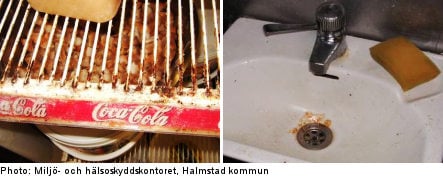Inspectors carried out unannounced checks in the coastal town all through the spring and were horrified by the unacceptably low standards on display at the vast majority of restaurants.
“we’re quite shocked. We actually didn’t think it would be this bad,” food safety inspector Ulrika Cederberg told Hallands-Posten.
Inspectors ordered the immediate closure of one restaurant, which was infested with a sort of beetle that lives on meat, cheese and dried fish.
Another restaurant in a similarly appalling state was given a stay of execution when staff stayed up all night to rectify the many hygienic shortcomings detailed by the inspectors.
The unexpected guests even found cases where food was stored in the toilets. Facilities for washing hands were also in short supply.
“There were nineteen places that didn’t have access to a functioning washbasin with soap and paper towels,” Cederberg told Expressen.
The authorities have already begun reinspecting the 61 premises that failed to make the grade, with the cost of the second inspection to be borne by the restaurants themselves.



 Please whitelist us to continue reading.
Please whitelist us to continue reading.
Member comments